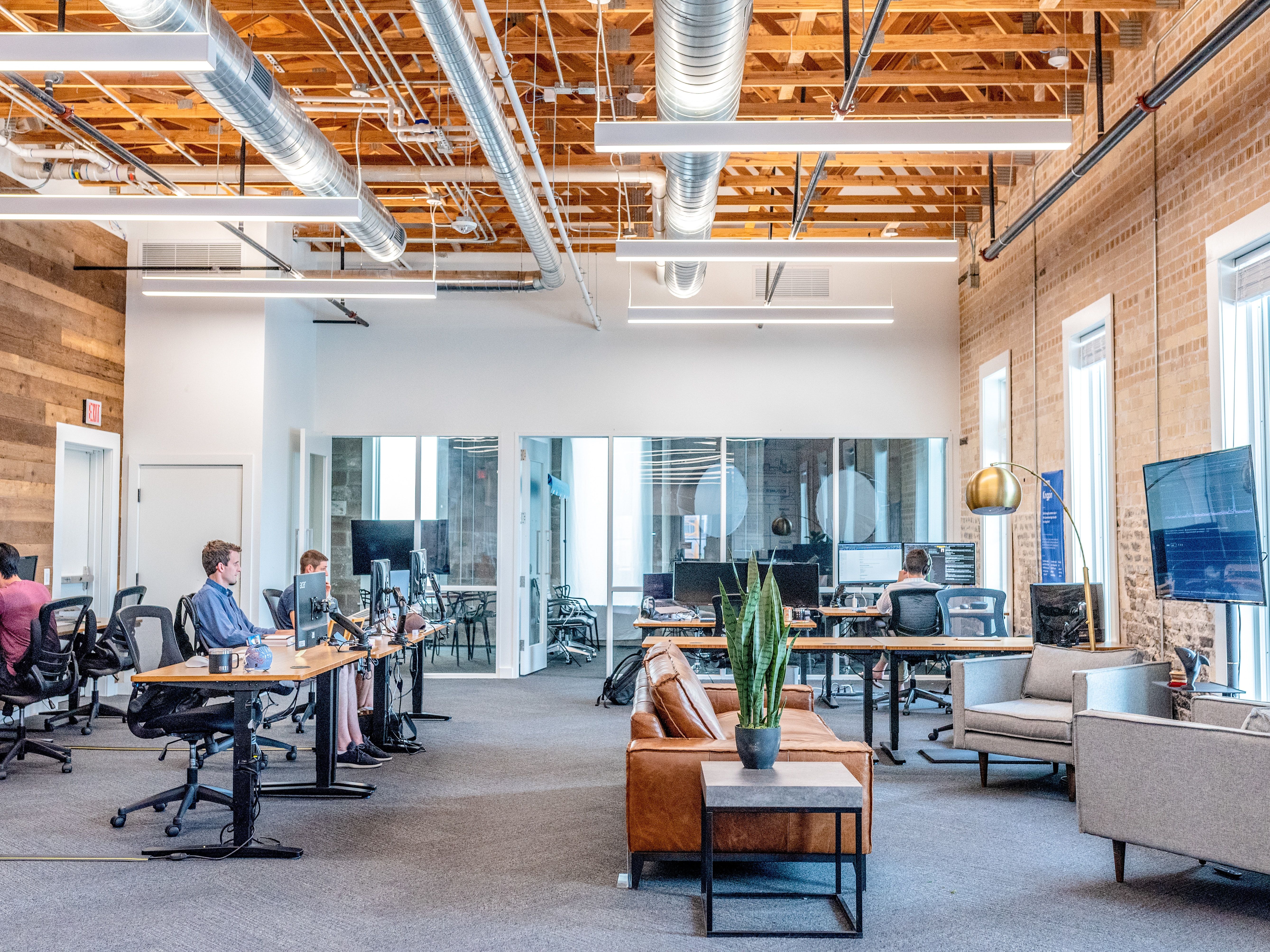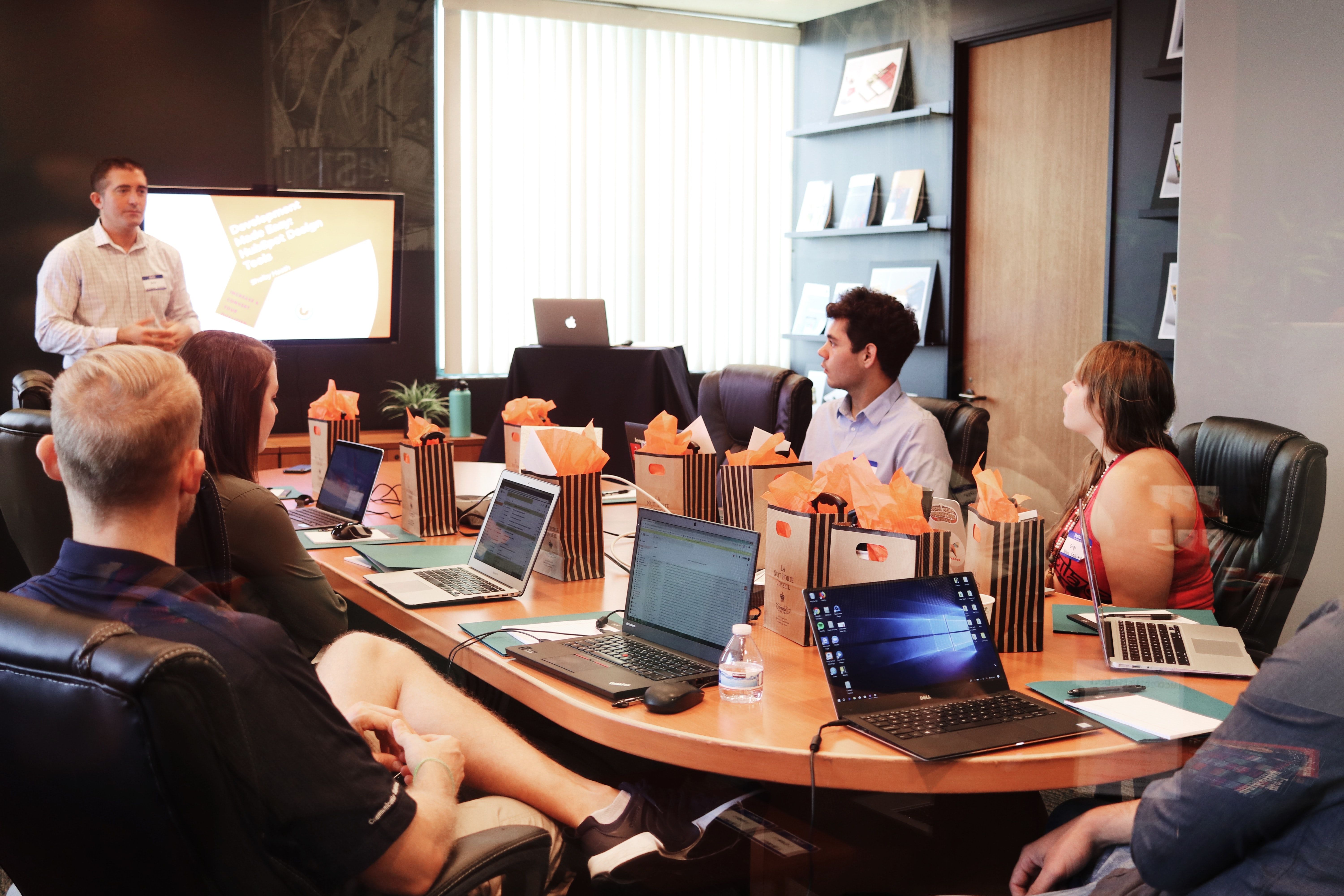As offices change, now is the time to really embrace tech
Moving office is a lot like moving house. Organizations are looking for the right space for their operations post-COVID for themselves and for their staff within. Location, size and features are all major things to consider when trying to find a new site to run their organization from. Other considerations are the convenience, adaptability and aesthetics of this site.
Fitting the needs of an organization itself as well as those who make up its ecosystem, isn't an easy task. But there are ways to make it easier, and we'll show you how.
Why move offices now?

Believe it or not, this is actually a great time to move office. The world has moved into a new era of office work, which means that workspaces have to accommodate this shift.
One major change in office conduct is the introduction of hybrid work models. Hybrid working has completely turned the way offices are run on its head. Shouldn't our workspaces reflect that? As workers come into work on different days and their schedules are organized, a new office may work better for your organization. Tenants could require less space, different kinds of spaces and other accommodations to make hybrid working more accessible and cost-effective.
In 2020, Fortune Magazine and Deloitte conducted a survey where 76% of CEOs expected that their organizations would require less office space in the coming years. Getting ahead of this wave could prove to be a real benefit to any office space facility.
And, as the world moves toward technological advancement, it's crucial to take into account how office space should change based on the tech organizations' needs in order to continue to function. Office refits are definitely something to consider, and an entirely new space may work better in terms of internal adjustments. Now is actually the optimal time for tech adoption in these kinds of properties. As JLL research wrote, "tech-enabled solutions are crucial to the success of the hybrid work model."
Speaking on this, Sharad Rastogi, President of JLL Technologies, explained, "Hybrid work looks different for every business given the uniqueness of their employee base and business model, and where they are with regard to return to work. While the office remains a cornerstone of operations, identifying and adopting the right technologies so employees can seamlessly work in the office, at home or elsewhere is essential to the success of the hybrid work model."
What prompts an organization to move offices?

Each individual organization is prompted to move offices according to specific needs that aren't being met. The most common prompts for moving are:
- New workspace requirements
- An expiring lease
- Business downturn
- And; company growth (which is the most popular reason by far)
This may go without saying, but the different motivations for changing spaces are a factor in the new spaces an organization is looking into. But other considerations are made, too. Once a team has decided to move offices, they then start looking into other ways that their workplaces can improve through this change.
What's the ideal lease length? What does their ideal office look like? What does their staff want out of this new space? How can they bring their office into the 21st-century?
Considerations for a new space
Choosing a new space can be a lot, but it's worth being picky about where you move. As a property or facility manager, try to take into account the staff experience to improve your space.
Here are a few specific examples of concrete considerations that organizations take into account to set themselves up for success:
- Growth-plan adaptability: Does this space fit your needs right now? Will this space fit your needs as your organization grows and changes in accordance with your plan or expectations?
- Facility management: Who owns the building/property, and who manages it? Does their management style fit your office's needs? Are they responsive and available to contact during working hours? Are they receptive to feedback?
- Amenities: Does this space offer the kinds of amenities that your team has come to expect or that will boost morale? Is there a kitchen? An on-site gym? A cleaning service? Security? Proper restrooms? Collaboration areas? Outdoor/green spaces? Natural light?
- Design/layout: Does the way this space is laid out make sense for the organization you're trying to run there and the staff that will be working there? Is it conducive to a hybrid work model? Is it eco-friendly? Accessible to those with disabilities? Is it adaptable to technology? Are you allowed to have it retrofitted or renovated?
- Client/customer convenience: Will clients or customers be coming into this space? Are there rooms or areas where they would feel comfortable? Is this office close to where your clients are based or accessible to them? Is the internet there conducive to high-quality video or voice calls? Does it look nice?
- Cost-effectiveness: Based on your organization's budget, what's the best you can hope for in a space? Is there any space slightly more expensive that is truly worth the money?
- Location/commute time: Which areas do your staff live in? Does this office need to be close to any other organization offices or spaces? Is it close to public transportation? Is it accessible?
- Tech status: Does this space offer the kind of technological tools you're looking for? Can this space be adaptable to tech? Are there technological tools already in place to make your life easier/better as a tenant?
- Parking: Does this building offer parking at all? Is parking free? How many of your employees or clients would be driving to this office? Are there EV charging stations? Is there any specific parking management system in place? Does the property or facility manager use parking management software (like Parkable) at all?
The challenges that come with moving office
But moving offices is easier said than done. There are a few obstacles that organizations need to get past when trying to start a move. There are also ways to avoid them. Here are some common snags they may hit and how to solve them:
- Scheduling issues: Try using a proposed timescale so that those planning the move, employees, and movers/contractors will all be on the same page, and no one is caught by surprise. This plan should be somewhat adjustable and accessible. Moving can take anywhere from a month to a whole year.
- Considering which types of contractors you may need: There are different types of contractors that could be useful in an office move. There are both local and national contractors. Local contractors can be less expensive and may come from local recommendations–also able to provide referrals to other contractors in the area. Larger moving projects, though, may be better handled by larger, national contracting companies.
- Making and sticking to a budget: When making a budget, making different spreadsheets for different types of spending could make things less chaotic. Using spreadsheets to keep track of all spending, even seemingly insignificant amounts for small charges, is crucial for sticking to the allotted expenses. Regularly checking if you're within the expected budget goals is also important. Overestimating your budget could also help keep your expectations realistic.
- Tech implementation challenges: When trying to adopt new tech, an organization can face obstacles left and right, like a lack of buy-in, employees feeling threatened by the new tech and the learning curve that comes with all new technology. It's important to create an office-wide conversation about how the organization can benefit from these tech changes and how this adoption can actually end up saving the office money in the long run.
Moving offices can be a fun and exciting opportunity
As we move forward into a time when workplaces are truly changing with flexible work models and with new technology, changing offices is actually a great opportunity for exploring how to bring an organization into the now. Adopting new technology is an efficient and necessary act in 2022. As Kate Nowak, a behavioral scientist at Microsoft, explains, "Technology must be rewarding to be adopted. It best serves multiple human needs—it helps you get the job done and is enjoyable to use."
The sky's the limit when it comes to brainstorming the possibilities of a new workspace! Researching what works for your property, finding a design firm that works for you, and looking into tech solutions are all fun and interesting. Doing so will open up a whole new perspective on how workspaces are transforming.
For instance, Parkable is a piece of technology that doesn't require any new hardware, and it solves parking woes that have been plaguing workspaces for decades. We've created a system for adaptable parking management that is easy to adopt, and that can change according to the needs of those parking in specific places based on a facility manager's input. Plus, Parkable is hybrid-work-friendly, equipped to coordinate spaces to be used at different times by different people. This is the kind of technology that saves time and frustration while being ready with the use of a smartphone.
Feeling overwhelmed by making these shifts is only to be expected. But these changes can be managed. Check out our blog post on change management strategies, where we break down the seven major principles of this process.
When moving offices, things can get taxing, but it's also a chance to fully consider how to shift gears within the workspace itself.
Suggested articles
Solve your parking problems
If you have workplace parking spots and want to...
- Improve employee parking experiences
- Reduce car park admin
- Make better use of your space
- Align your parking with a flexible working culture
- Implement hardware solutions
...feel free to get in touch!
 Blog
Blog